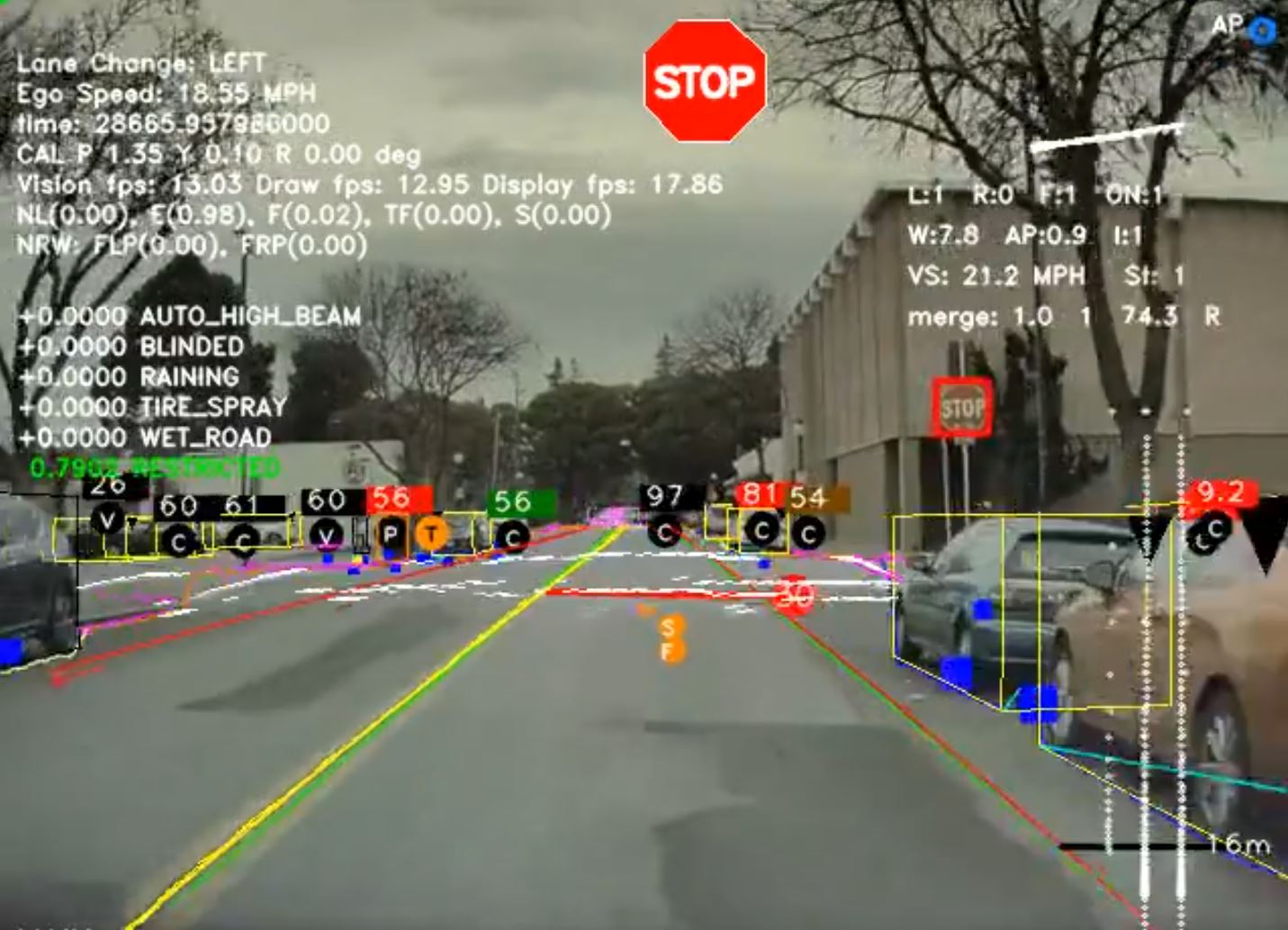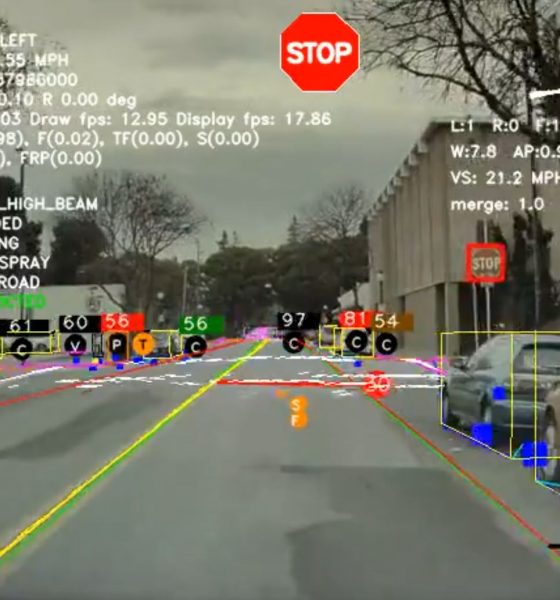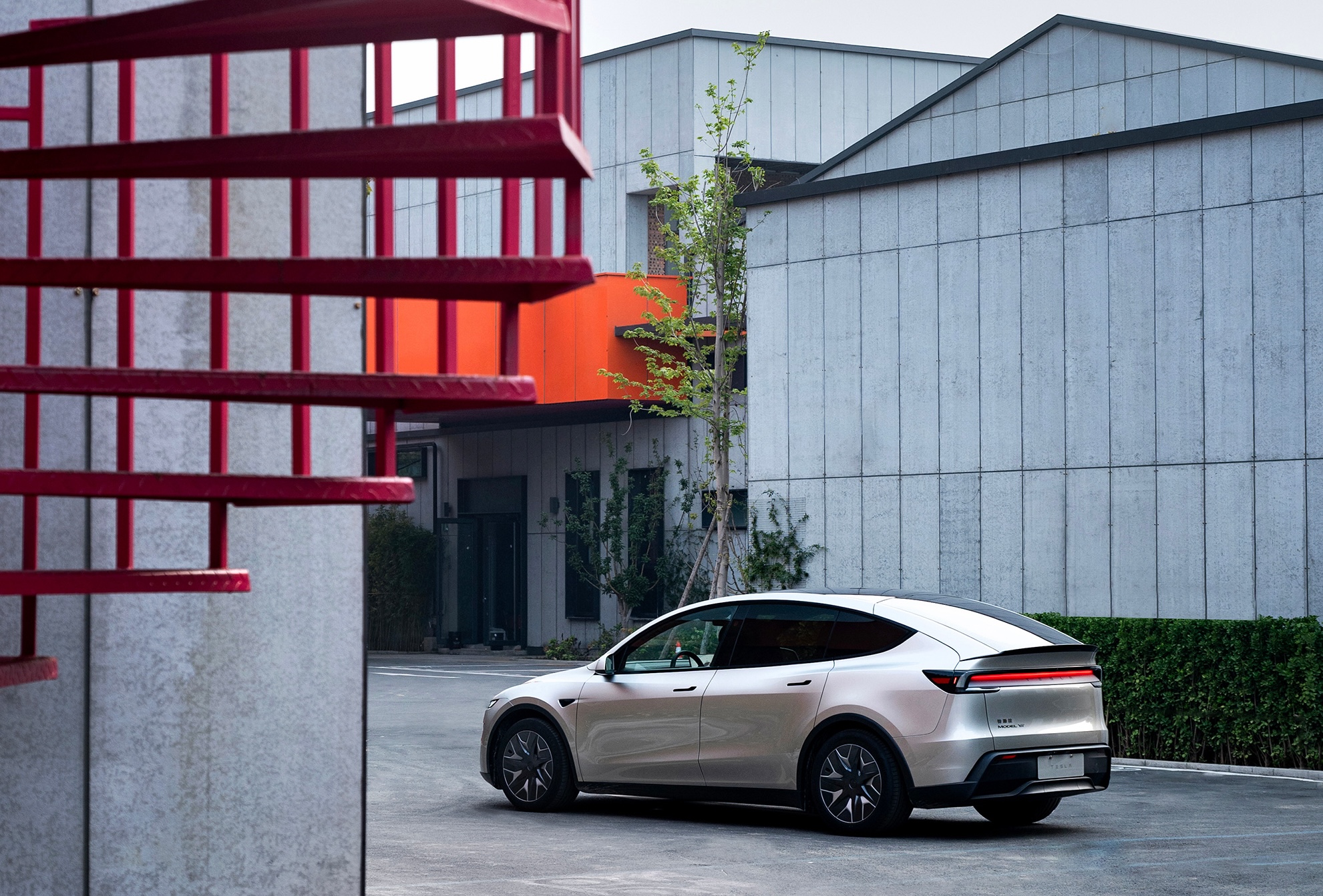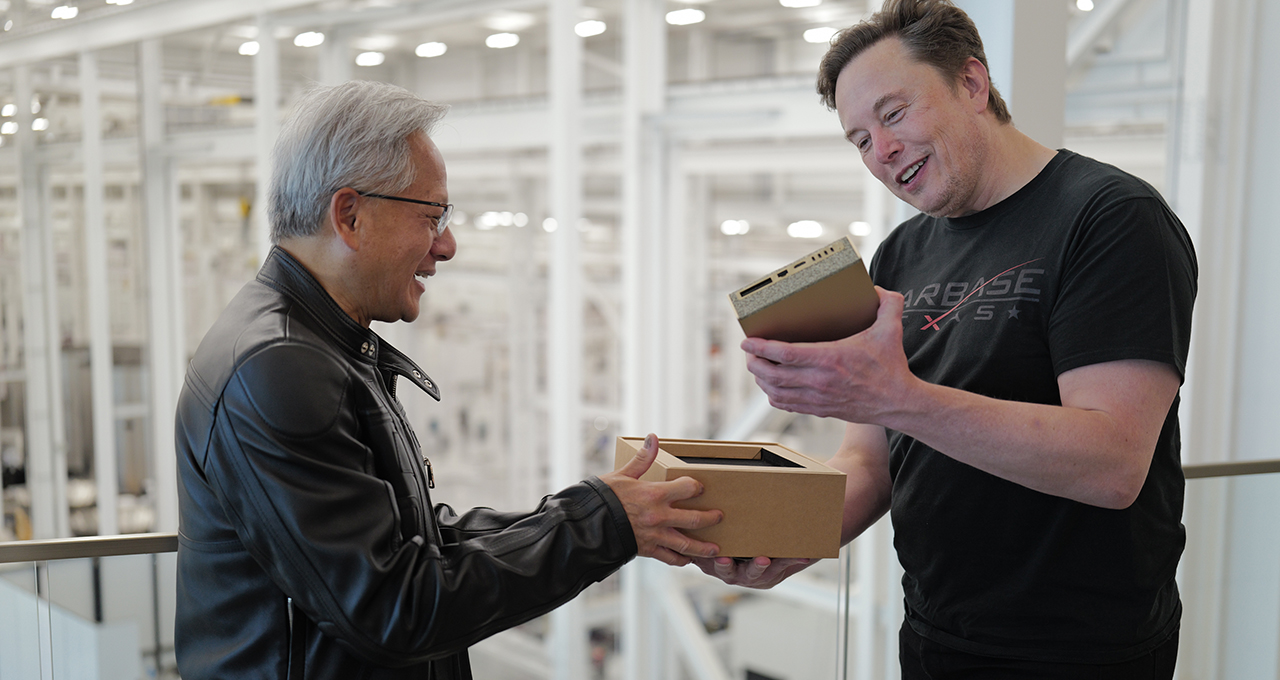

News
Tesla Autopilot’s 4D upgrade could lead to more FSD features
Tesla CEO Elon Musk stated that the company’s Autopilot systems are being upgraded to 4D, which will improve the performance and capabilities of the semi-autonomous driving function. Currently, Autopilot is operating with “~2.5D,” Musk said.
The developments came from a question that was asked by a Twitter follower of Musk’s who has issues using Tesla’s Summon feature on his driveway. Summon allows owners to retrieve their vehicles by using their Smartphones. By holding the “COME TO ME” button within the Tesla app, the car will use GPS vectoring to travel to the location of the phone.
Summon is a part of Tesla’s Full Self-Driving suite. But, the rework of Autopilot’s dimensional upgrade is apart of something much bigger. Perhaps it deals with a complete rewrite of Autopilot that will extend the company’s FSD features.
We need to finish upgrading Autopilot to 4D vs ~2.5D, then it will go up very steep slopes
— Elon Musk (@elonmusk) July 22, 2020
However, the owner stated that the grade of his driveway is slightly steeper than 10%, which inhibits the vehicle from traveling up roads that have inclines. The steepness of the slope, along with normal transitions from a street to a driveway, can present issues for Tesla’s Autopilot. This could be due to the lack of information that Tesla’s Neural Network has for navigating these environments.
With that being said, Tesla is developing a 4-dimensional system for Autopilot. The development of new elements for Autopilot to comprehend the surroundings and road environment of the vehicle could lead to more drastic improvements and an increasingly accurate comprehension of the roads a vehicle travels on.
Tesla’s currently Autopilot suite uses ~2.5D, Musk said. Now, it uses two-dimensional images along with labels, which could account for the around 2.5 dimensions that Musk spoke of in the tweet.

Adding dimensions to the Autopilot system will simply increase the accuracy of how the car reacts in certain situations. Currently, Tesla uses images from Autopilot cameras that are labeled with information. Tesla could use 3-dimensional stereoscopic scenes that are reconstructed from video, along with timestamps to improve accuracy.
A few members of the Tesla community put their two cents in on what the 4-dimensional Autopilot system could entail.
Reddit user u/__TSLA__ stated that curating a massive series of traffic scenarios and objects that a car might encounter during a drive could improve the accuracy of Autopilot and Tesla’s self-driving capabilities.
However, another Reddit user, u/Semmel_Baecker, said that 4D could mean that the Autopilot cameras could build a real-time 3D environment and then predict the movements of labeled objects in 4D based on past behaviors of other vehicles. This strategy would effectively use the Neural Network to learn the reactions of other drivers or objects.
Tesla continues to develop Autopilot behaviors to eventually release a “feature complete” Full Self-Driving suite in the future. The electric automaker continues to release patents that aim to build a more accurate Autopilot system that will accelerate the company’s journey toward Level 5 Autonomy, which Musk says is coming soon.
Most recently, Tesla submitted a patent titled, “Enhanced Object Detection for Autonomous Vehicles Based on Field View,” that would crop important objects in images and increase the resolution of those images. If pedestrians, vehicles, or other objects are available in an image, they would be available at an increased resolution to improve the accuracy of Autopilot.
Tesla’s exact plans for an Autopilot upgrade to 4-dimensional imagery is unknown. The increased accuracy is necessary for the company’s cars to drive in any environment. Tesla will soon release FSD’s “Driving on City Streets” function, which will complete the suite.

News
Tesla extends FSD Supervised ride-alongs in Europe by three months
Needless to say, it does appear that FSD fever is starting to catch in Europe.

Tesla appears to be doubling down on its European Full Self-Driving (Supervised) push, with the company extending its demo ride-along program by three months until the end of March 2026. The update seems to have been implemented due to overwhelming demand.
Needless to say, it does appear that FSD fever is starting to catch in Europe.
Extended FSD demonstrations
Tesla EU Policy and Business Development Manager Ivan Komušanac shared on LinkedIn that the company is offering ride-along experiences in Germany, France and Italy while working toward FSD (Supervised) approval in Europe.
He noted that this provides a great feedback opportunity from the general public, encouraging participants to record and share their experiences. For those unable to book in December, Komušanac teased more slots as “Christmas presents.”
Tesla watcher Sawyer Merritt highlighted the extension on X, stating that dates now run from December 1, 2025, to March 31, 2026, in multiple cities including Stuttgart-Weinstadt, Frankfurt and Düsseldorf in Germany. This suggests that the FSD ride-along program in Europe has officially been extended until the end of the first quarter of 2026.
Building momentum for European approval
Replies to Merritt’s posts buzzed with excitement, with users like @AuzyMale noting that Cologne and Düsseldorf are already fully booked. This sentiment was echoed by numerous other Tesla enthusiasts on social media. Calls for the program’s expansion to other European territories have also started gaining steam, with some X users suggesting Switzerland and Finland as the next locations for FSD ride-alongs.
Ultimately, the Tesla EU Policy and Business Development Manager’s post aligns with the company’s broader FSD efforts in Europe. As per recent reports, Tesla recently demonstrated FSD’s capabilities for Rome officials. Reporters from media outlets in France and Germany have also published positive reviews of FSD’s capabilities on real-world roads.
News
Tesla’s six-seat extended wheelbase Model Y L sold out for January 2026
Estimated delivery dates for new Tesla Model Y L orders now extend all the way into February 2026.

The Tesla Model Y L seems to be in high demand in China, with estimated delivery dates for new orders now extending all the way into February 2026.
This suggests that the Model Y L has been officially sold out from the rest of 2025 to January 2026.
Model Y L estimated delivery dates
The Model Y L’s updated delivery dates mark an extension from the vehicle’s previous 4-8 week estimated wait time. A detailed chart shared by Tesla data tracker @Tslachan on X shows the progressions of the Model Y L’s estimated delivery dates since its launch earlier this year.
Following its launch in September, the vehicle was given an initial October 2025 estimated delivery date. The wait times for the vehicle were continually updated over the years, until the middle of November, when the Model Y L had an estimated delivery date of 4-8 weeks. This remained until now, when Tesla China simply listed February 2026 as the estimated delivery date for new Model Y L orders.
Model Y demand in China
Tesla Model Y demand in China seems to be very healthy, even beyond the Model Y L. New delivery dates show the company has already sold out its allocation of the all-electric crossover for 2025. The Model Y has been the most popular vehicle in the world in both of the last two years, outpacing incredibly popular vehicles like the Toyota RAV4. In China, the EV market is substantially more saturated, with more competitors than in any other market.
Tesla has been particularly kind to the Chinese market, as it has launched trim levels for the Model Y in the country that are not available anywhere else, such as the Model Y L. Demand has been strong for the Model Y in China, with the vehicle ranking among the country’s top 5 New Energy Vehicles. Interestingly enough, vehicles that beat the Model Y in volume like the BYD Seagull are notably more affordable. Compared to vehicles that are comparably priced, the Model Y remains a strong seller in China.
Elon Musk
NVIDIA CEO Jensen Huang commends Tesla’s Elon Musk for early belief
“And when I announced DGX-1, nobody in the world wanted it. I had no purchase orders, not one. Nobody wanted to buy it. Nobody wanted to be part of it, except for Elon.”

NVIDIA CEO Jensen Huang appeared on the Joe Rogan Experience podcast on Wednesday and commended Tesla CEO Elon Musk for his early belief in what is now the most valuable company in the world.
Huang and Musk are widely regarded as two of the greatest tech entrepreneurs of the modern era, with the two working in conjunction as NVIDIA’s chips are present in Tesla vehicles, particularly utilized for self-driving technology and data collection.
Nvidia CEO Jensen Huang regrets not investing more in Elon Musk’s xAI
Both CEOs defied all odds and created companies from virtually nothing. Musk joined Tesla in the early 2000s before the company had even established any plans to build a vehicle. Jensen created NVIDIA in the booth of a Denny’s restaurant, which has been memorialized with a plaque.
On the JRE episode, Rogan asked about Jensen’s relationship with Elon, to which the NVIDIA CEO said that Musk was there when nobody else was:
“I was lucky because I had known Elon Musk, and I helped him build the first computer for Model 3, the Model S, and when he wanted to start working on an autonomous vehicle. I helped him build the computer that went into the Model S AV system, his full self-driving system. We were basically the FSD computer version 1, and so we were already working together.
And when I announced DGX-1, nobody in the world wanted it. I had no purchase orders, not one. Nobody wanted to buy it. Nobody wanted to be part of it, except for Elon.
He goes ‘You know what, I have a company that could really use this.’ I said, Wow, my first customer. And he goes, it’s an AI company, and it’s a nonprofit and and we could really use one of these supercomputers. I boxed one up, I drove it up to San Francisco, and I delivered it to the Elon in 2016.”
The first DGX-1 AI supercomputer was delivered personally to Musk when he was with OpenAI, which provided crucial early compute power for AI research, accelerating breakthroughs in machine learning that underpin modern tools like ChatGPT.
Tesla’s Nvidia purchases could reach $4 billion this year: Musk
The long-term alliance between NVIDIA and Tesla has driven over $2 trillion in the company’s market value since 2016.








